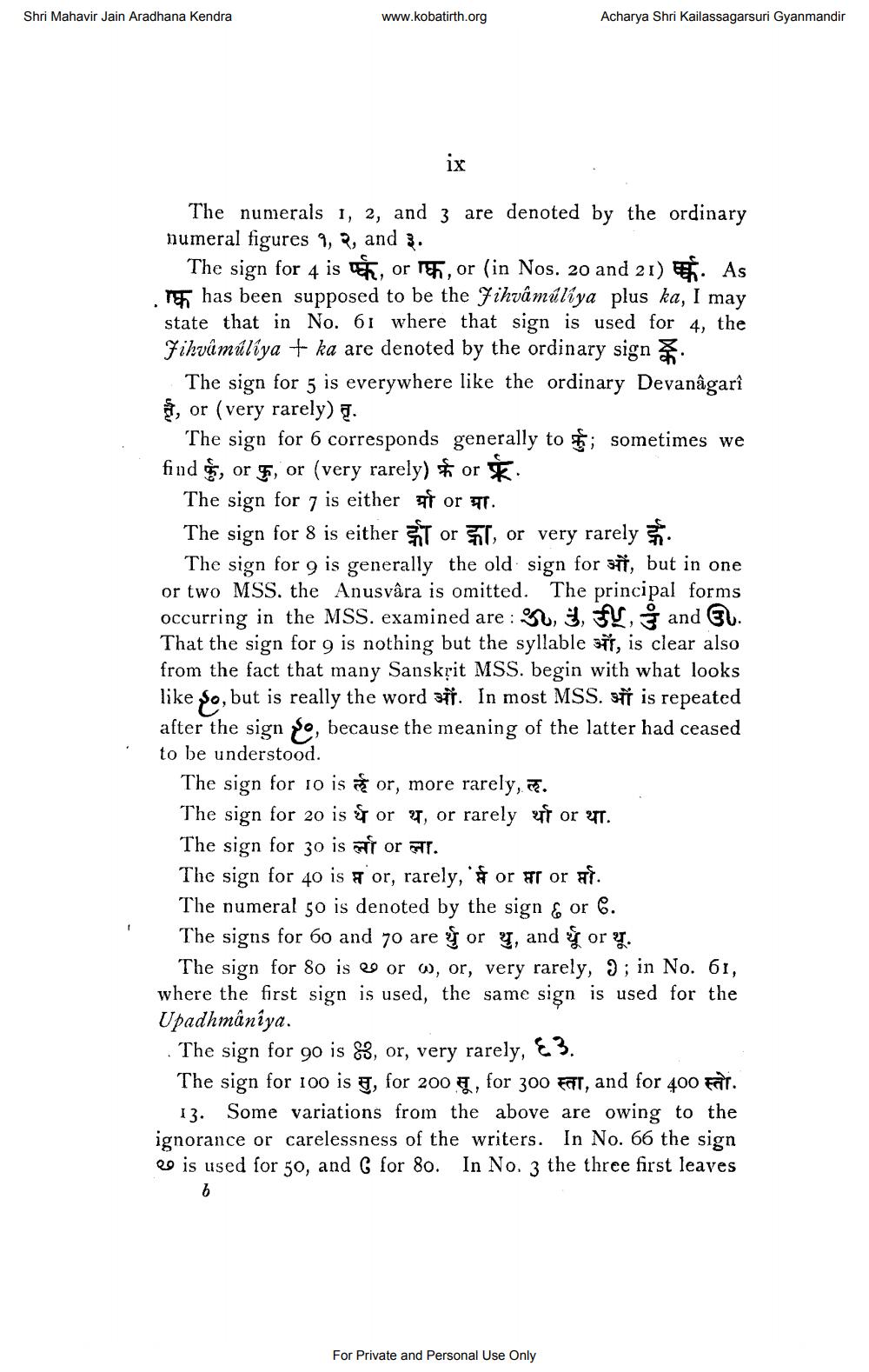________________
Shri Mahavir Jain Aradhana Kendra
www.kobatirth.org
Acharya Shri Kailassagarsuri Gyanmandir
ix
The numerals 1, 2, and 3 are denoted by the ordinary numeral figures 9, 2, and 3.
The sign for 4 is us, or 15, or (in Nos. 20 and 21) . As T has been supposed to be the Jihvâ múliya plus ka, I may state that in No. 61 where that sign is used for 4, the Fihvámúliya + ka are denoted by the ordinary sign .
The sign for 5 is everywhere like the ordinary Devanagari , or (very rarely) .
The sign for 6 corresponds generally to ; sometimes we find , or , or (very rarely) # or .
The sign for 7 is either of or a. The sign for 8 is either sit or 5T, or very rarely
The sign for 9 is generally the old sign for it, but in one or two MSS. the Anusvâra is omitted. The principal forms occurring in the MSS. examined are: 3, FL, and EU. That the sign for 9 is nothing but the syllable sit, is clear also from the fact that many Sanskrit MSS. begin with what looks like yo, but is really the word 319. In most MSS. sff is repeated after the sign o, because the meaning of the latter had ceased to be understood.
The sign for to is one or, more rarely, . The sign for 20 is & or u, or rarely vf or YT. The sign for 30 is ei or AT. The sign for 40 is for, rarely, or pr or af. The numeral so is denoted by the sign & or 6. The signs for 60 and 70 are for y, and for y.
The sign for 80 is e or w, or, very rarely, 3; in No. 61, where the first sign is used, the same sign is used for the Upadhmâniya. · The sign for 90 is , or, very rarely, E3. The sign for 100 is y, for 200 , for 300 fat, and for 400 Ft.
13. Some variations from the above are owing to the ignorance or carelessness of the writers. In No. 66 the sign e is used for 50, and 6 for 80. In No. 3 the three first leaves
For Private and Personal Use Only




